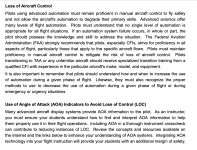I have the onspeed AoA device installed in my RV-8...but due to Lycoming backlog I have yet to fly it. However, I knew for certain that my -8 would have an AoA system of some flavor. As it works out the onspeed device is the best fit for me.
In Navy fighters and we absolutely used AoA, specifically for a 1-circle, lift limit dogfight and more well know landing on the aircraft carrier. The nice thing about AoA for fighters is that your gross weight (fuel and ordnance) can vary greatly from the beginning to the end of your sortie. Nearly 50% of the aircrafts weight can be burned or expended, but regardless of weight, AoA is always accurate.
I was originally skeptical that AoA was not needed in light civil GA plane, mainly because your gross weight should only change at max a few hundred pounds. Essentially, your reference airspeed 'should' be the same each day.
Where I think the AoA systems stand out is in the impossible turn, loss of power scenario immediately after takeoff. I am a flight Instructor in the USAF reserves for a Pilatus PC-12, which has AoA. While I am not giving advice or recommending the impossible turn, we in the PC-12 have a vetted procedure for executing the 'impossible turn.' Step 1: of our Critical Action Procedure is "AoA Centered." We set flaps to their first notch (15*), roll into a 45* AOB turn and fly on-speed AoA. There are a series of pre-flight calculations to determine our min-safe altitude for turnback. Executed correctly, following AoA, gives us repeatable and safe turnback. When banked to 45* AOB with various amount of G, it is nearly impossible to track a Vref. However, AoA is consistent and fairly predictable with practice.
Additionally, AoA will save your life in a HAPL (High Altitude Power Loss). As an instructor, I teach these as well. The procedure involves turning to the nearest piece of concrete, trimming pitch to onspeed AoA and then working the problem. Once we get into the mechanics of the engine out landing pattern, we continue to fly onspeed AoA. Mind you, that when you change your flap setting, critical AoA for the airfoil changes and the system needs to be programed for each flap setting. Using AoA for the failed engine scenario gives you an opportunity to fly the aircraft all the way into the crash, which I think was expressed by Bob Hoover.
The team onspeed device is even one step better because your eyes are free and you can track AoA purely by hearing. For the reasons of giving myself the best chance with an engine failed scenario, I will always have AoA in my personal planes.
In Navy fighters and we absolutely used AoA, specifically for a 1-circle, lift limit dogfight and more well know landing on the aircraft carrier. The nice thing about AoA for fighters is that your gross weight (fuel and ordnance) can vary greatly from the beginning to the end of your sortie. Nearly 50% of the aircrafts weight can be burned or expended, but regardless of weight, AoA is always accurate.
I was originally skeptical that AoA was not needed in light civil GA plane, mainly because your gross weight should only change at max a few hundred pounds. Essentially, your reference airspeed 'should' be the same each day.
Where I think the AoA systems stand out is in the impossible turn, loss of power scenario immediately after takeoff. I am a flight Instructor in the USAF reserves for a Pilatus PC-12, which has AoA. While I am not giving advice or recommending the impossible turn, we in the PC-12 have a vetted procedure for executing the 'impossible turn.' Step 1: of our Critical Action Procedure is "AoA Centered." We set flaps to their first notch (15*), roll into a 45* AOB turn and fly on-speed AoA. There are a series of pre-flight calculations to determine our min-safe altitude for turnback. Executed correctly, following AoA, gives us repeatable and safe turnback. When banked to 45* AOB with various amount of G, it is nearly impossible to track a Vref. However, AoA is consistent and fairly predictable with practice.
Additionally, AoA will save your life in a HAPL (High Altitude Power Loss). As an instructor, I teach these as well. The procedure involves turning to the nearest piece of concrete, trimming pitch to onspeed AoA and then working the problem. Once we get into the mechanics of the engine out landing pattern, we continue to fly onspeed AoA. Mind you, that when you change your flap setting, critical AoA for the airfoil changes and the system needs to be programed for each flap setting. Using AoA for the failed engine scenario gives you an opportunity to fly the aircraft all the way into the crash, which I think was expressed by Bob Hoover.
The team onspeed device is even one step better because your eyes are free and you can track AoA purely by hearing. For the reasons of giving myself the best chance with an engine failed scenario, I will always have AoA in my personal planes.





